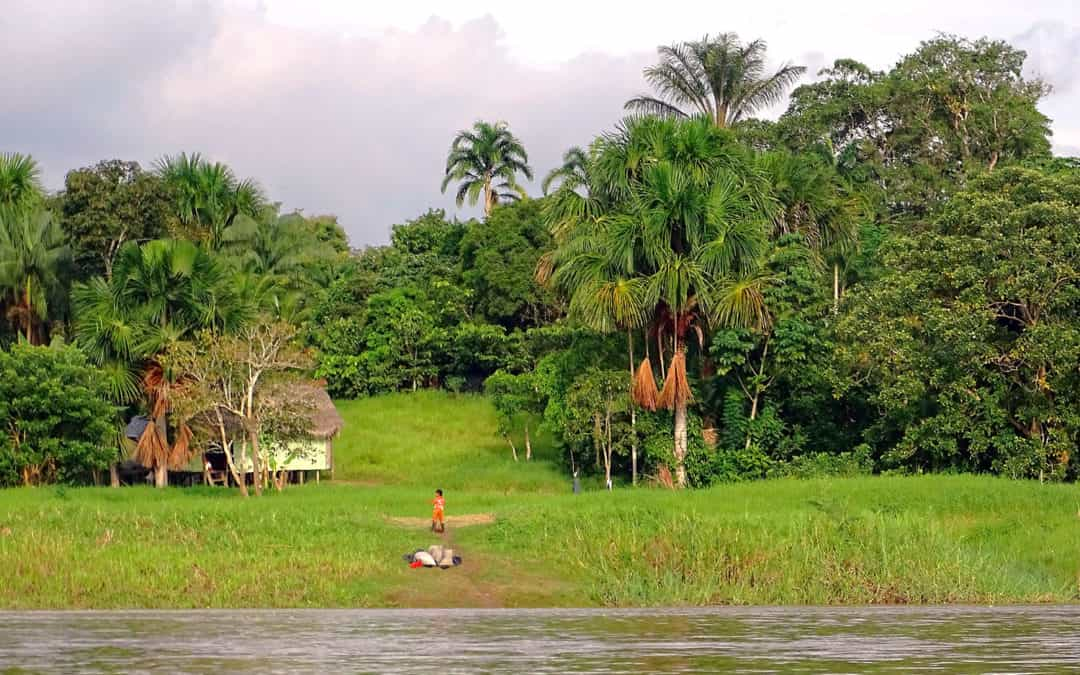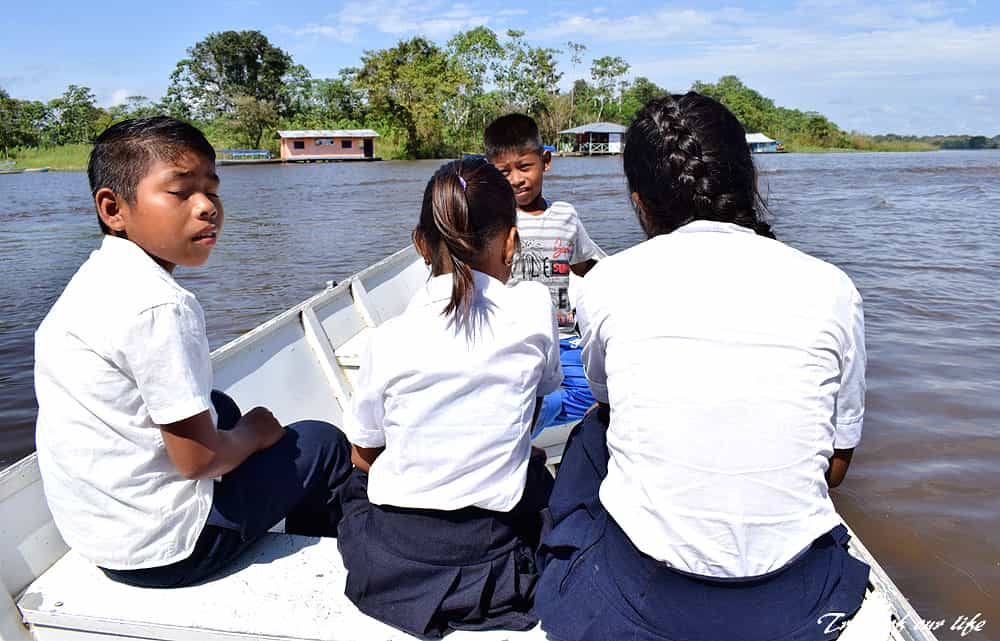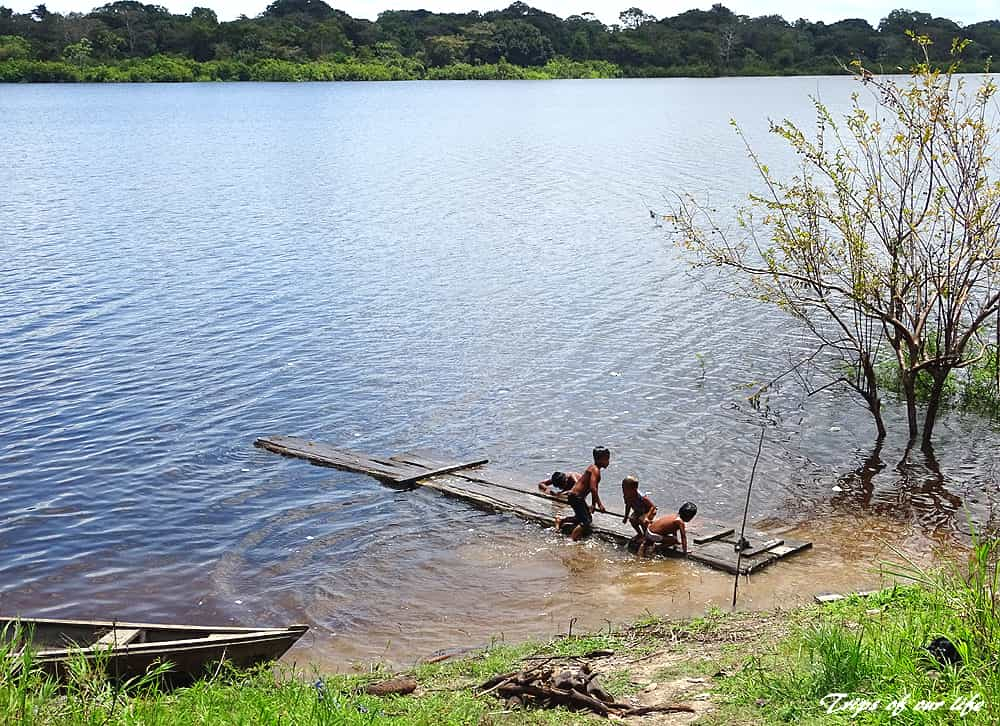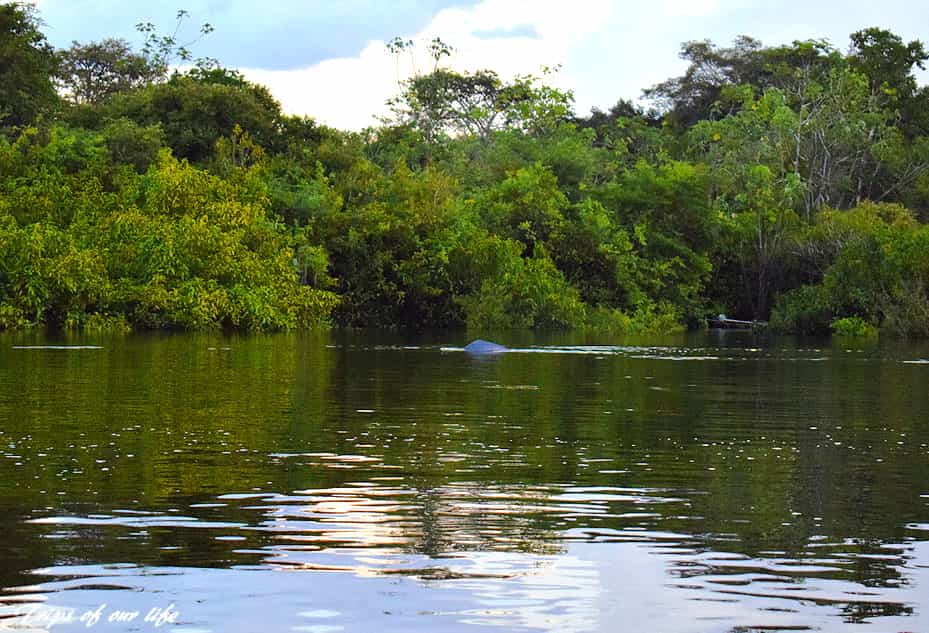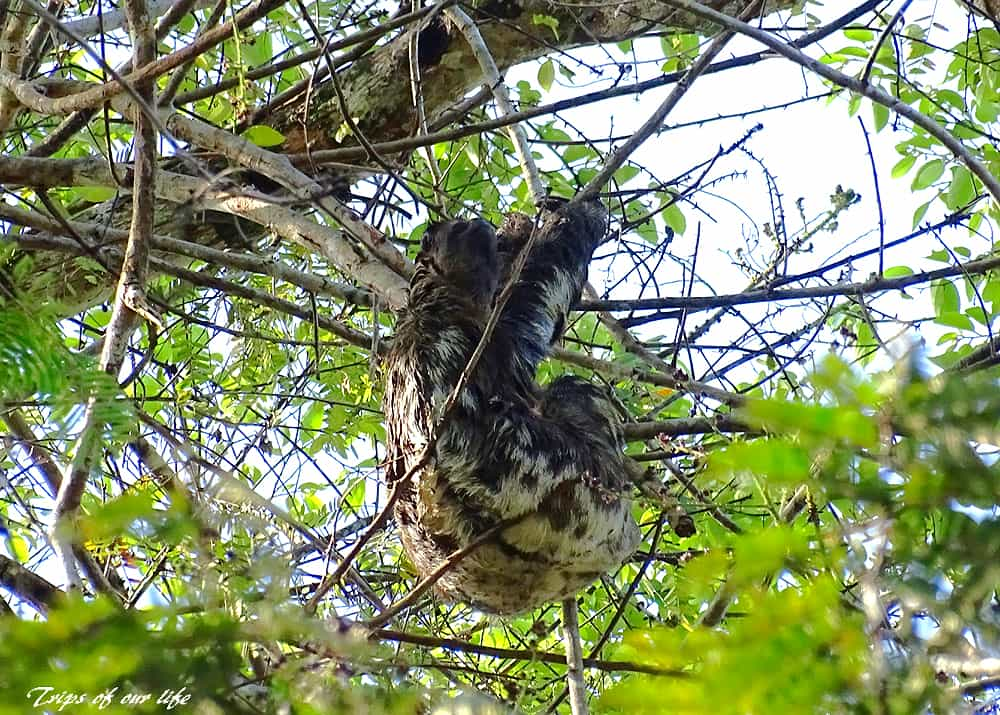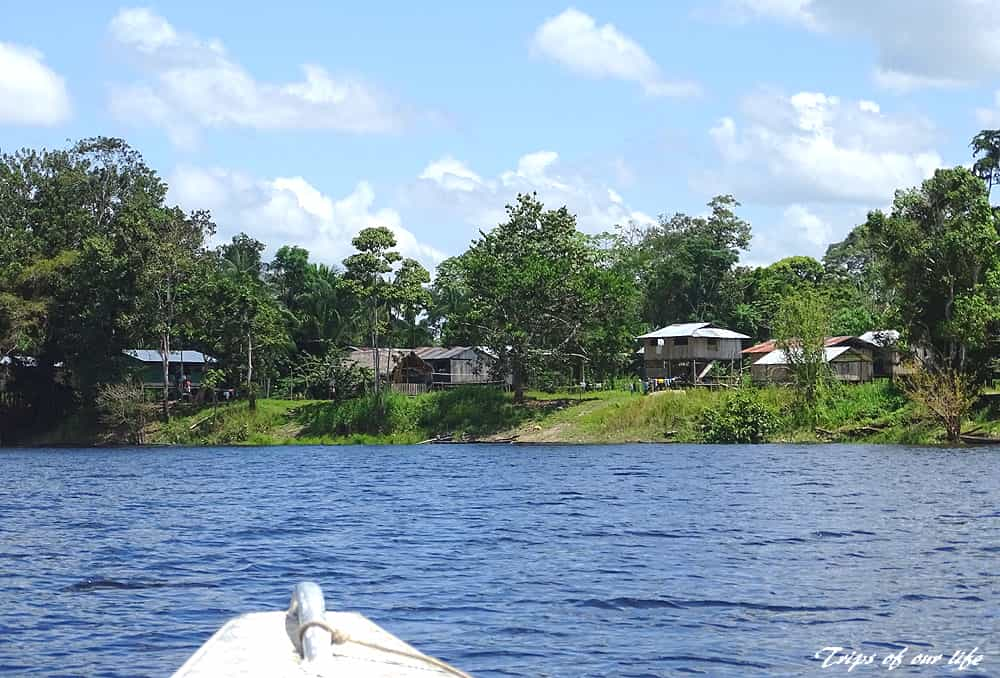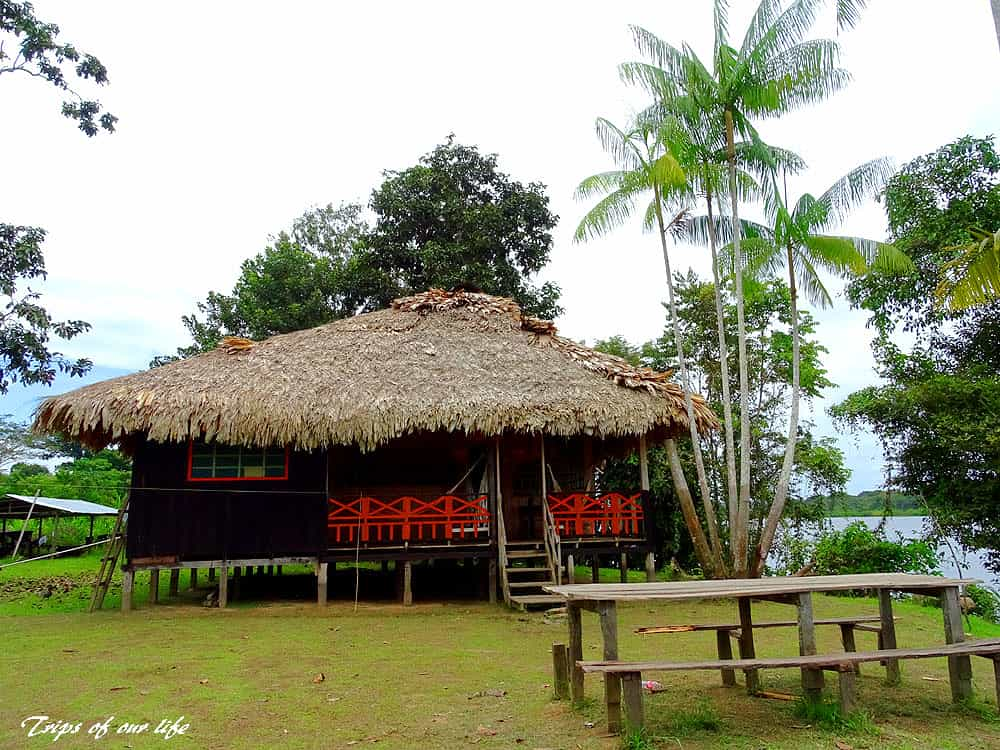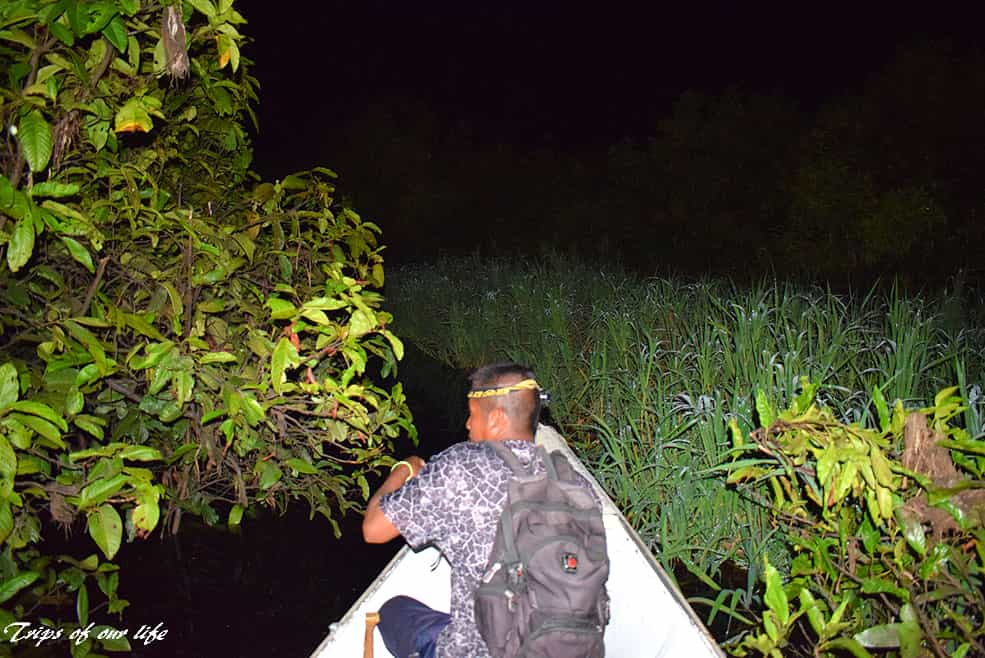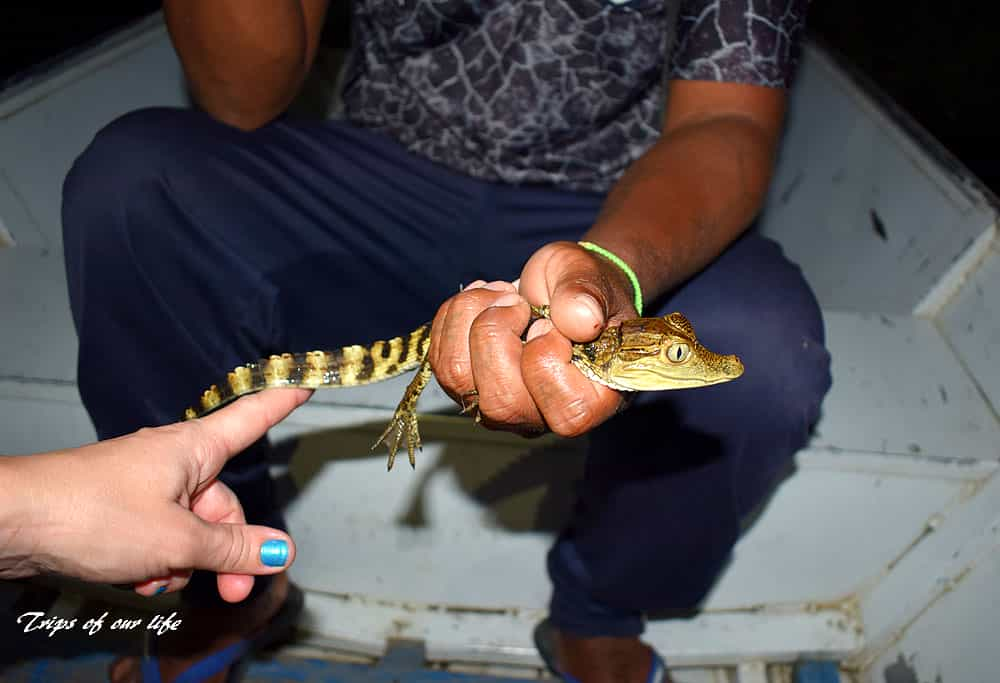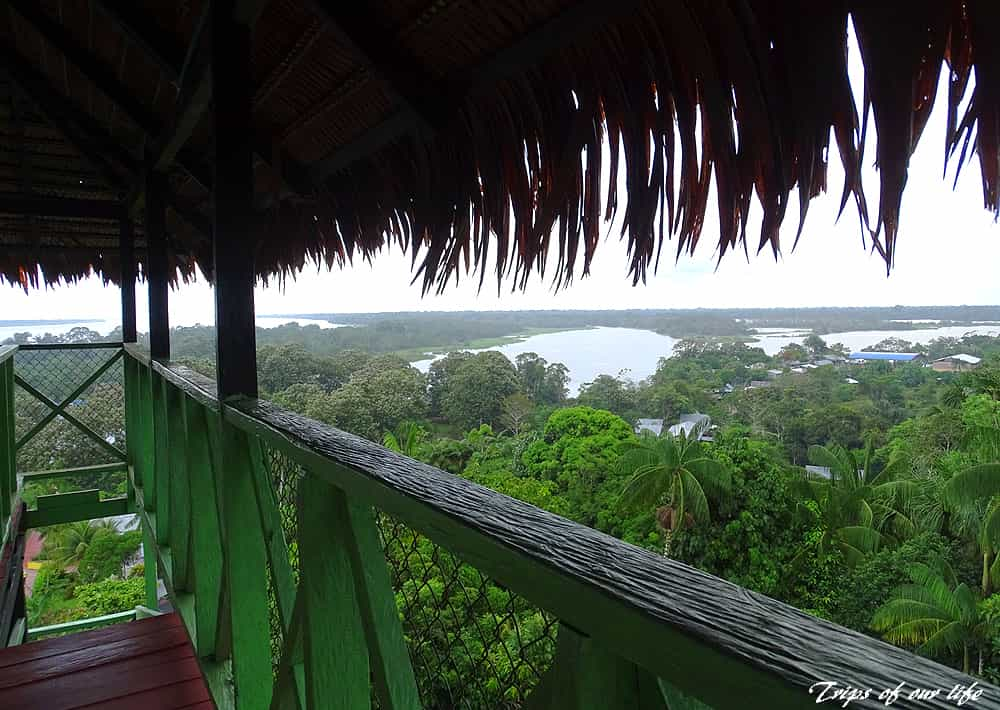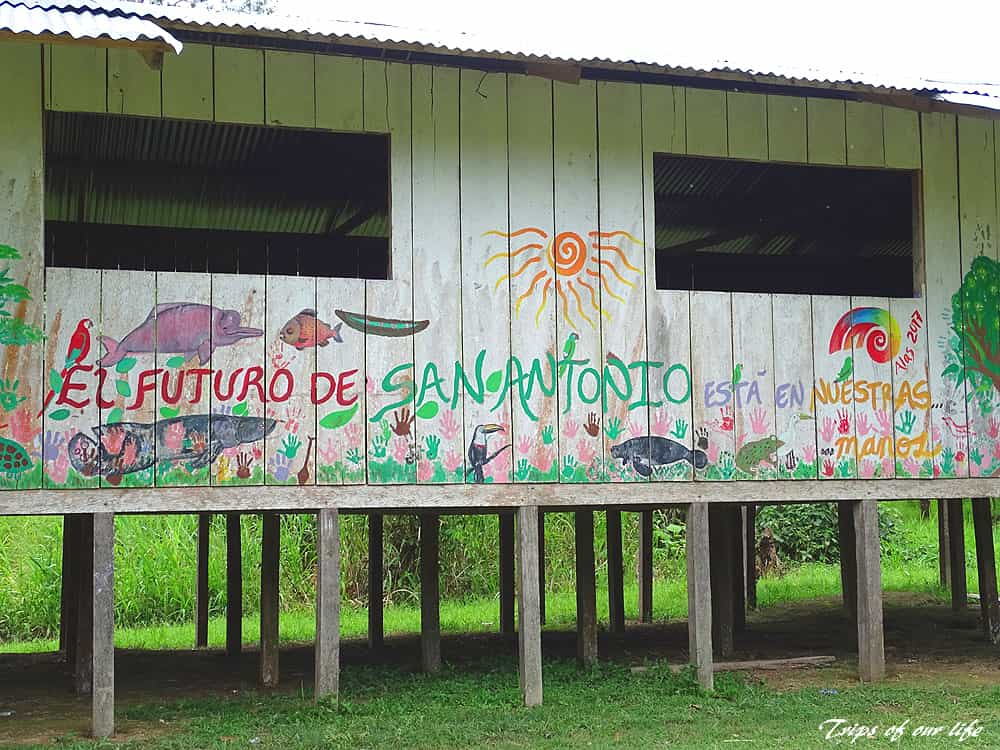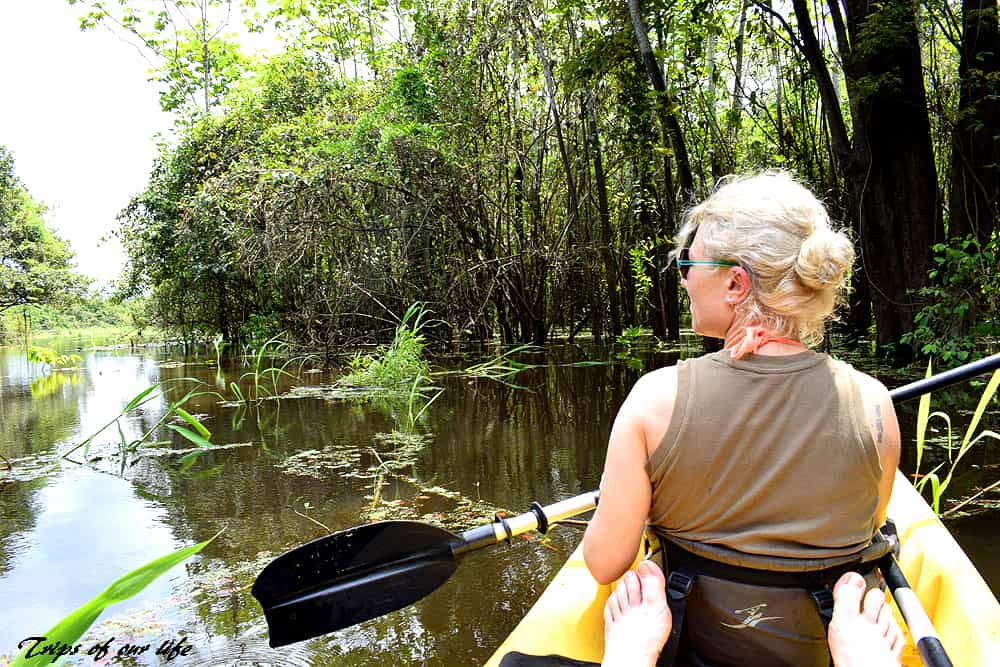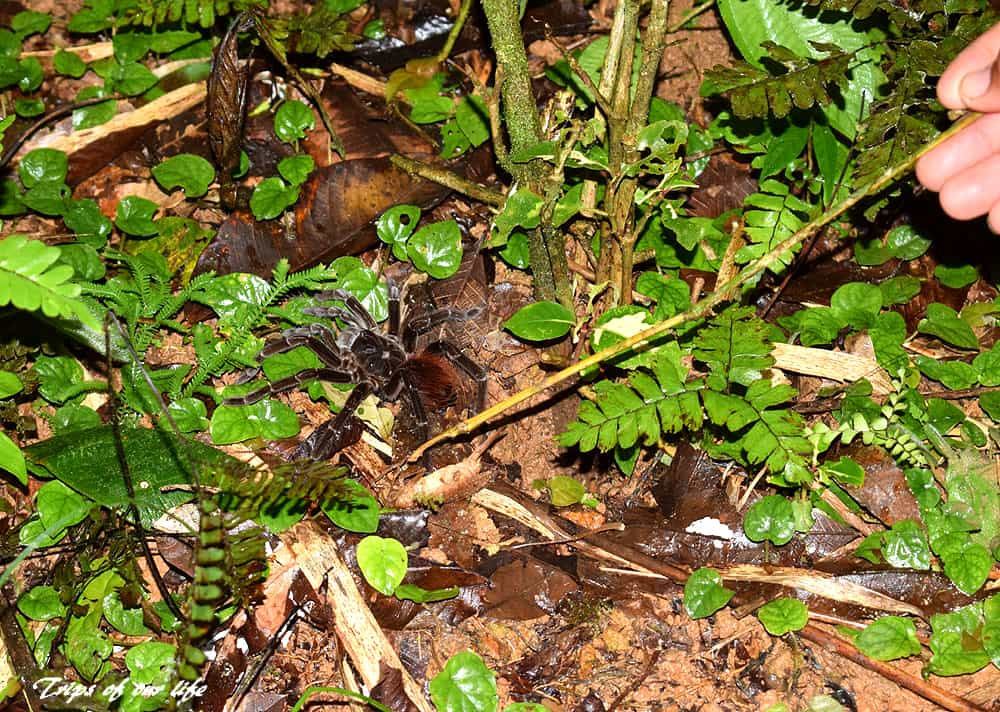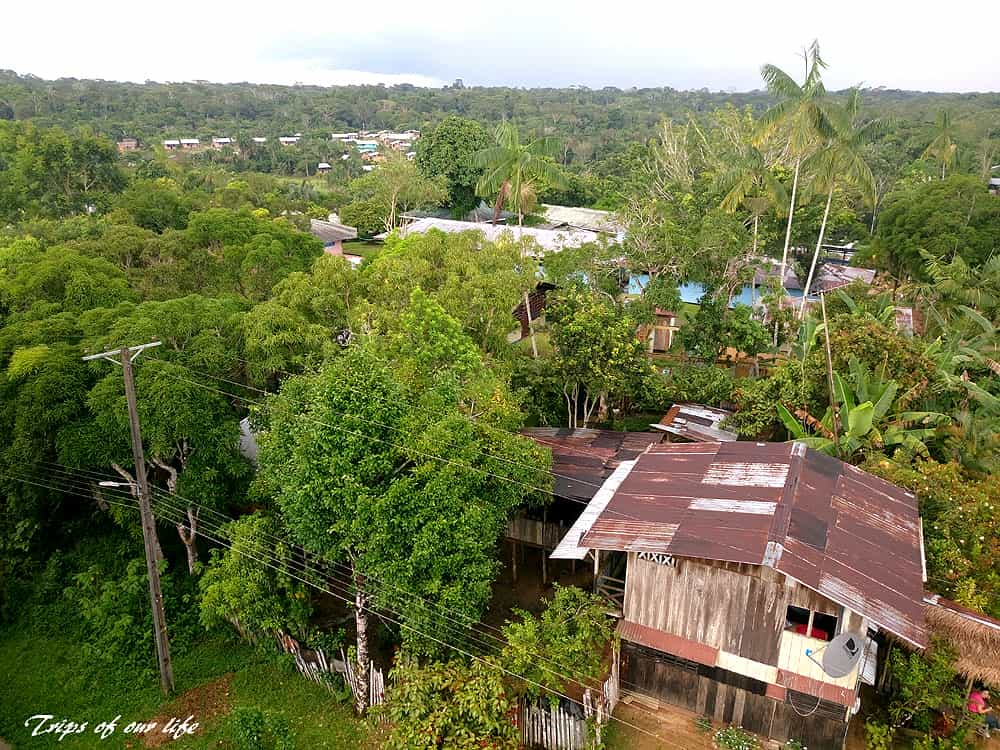Woke up in the morning, had breakfast, prepared our stuff and left Puerto Nariño. It is now time to enter deeper into the jungle and visit a local community of the Tikuna tribe, the magical lake of Tarapoto!!!
The 4 of us went off by boat and also got on board 4 Tikunas’ children, that had just finished school classes because of a holiday. Tikunas are an indigenous tribe of the Amazon living in communities in the Amazonas region, mainly in Brazil, Peru and Colombia. In Tarapoto lake, the community consists of about 56 people, mainly fishermen, who live with their families in wooden huts near the shores of the lake. Their living conditions are not as good as those of Puerto Nariño residents, as there is no running water and sewage system, and electricity is available only for a few hours per day (mainly during night). Even though over the last few years they are dressed with normal clothes and not with traditional garments, they still wash their clothes in the river, where they also have their bath, whereas running water is stored in water tanks.
This specific community is one of those that host tourists in the area. And so, they have constructed a small guesthouse with 3 twin rooms and a bigger one with dormitory beds and a shared toilette outdoors right in front of the lake. That was the place where we spent our night as well, together with 2 other visitors. Total number of tourists in the area only 4! So, we left our stuff and off to explore the jungle with the tribe leader. After walking for 2 hours and passing over small creeks hanging from vines like monkeys, we returned for lunch in the community restaurant and play with the Tikunas children. Not for long though, as we had to prepare our own dinner! Let’s go then for piranhas fishing, or whatever else we might catch!!
In Tarapoto lake, one may find lots of fish species, but in specific spots near mangrove trees, dangerous piranhas (pirañas) also live along! That was my first time ever fishing in my whole life, so I cannot tell I was really thrilled. I caught nothing and I was more into taking photos. Thereafter, we returned to the village to deliver our catch to the restaurant and afterwards to go for a boat ride again for pink and grey dolphin watching and swimming in the lake! Until sunset, we enjoyed swimming in a dreamy landscape in the warm lake with dolphins also swimming around us nearby!! As it gets darker and darker, swimming in the lake can be dangerous, so we went back to the village to endeavor in our dinner and get ready for the last part of our adventure today.
Off to Tarapoto lake with the Ticuna kids
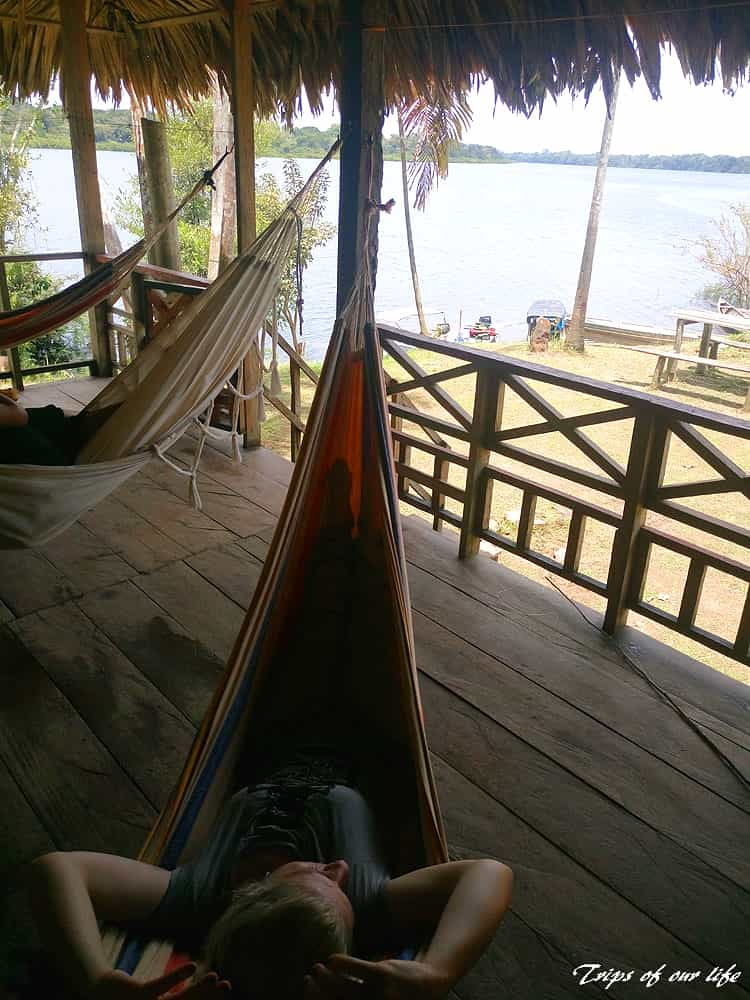
Hammock life facing the lake
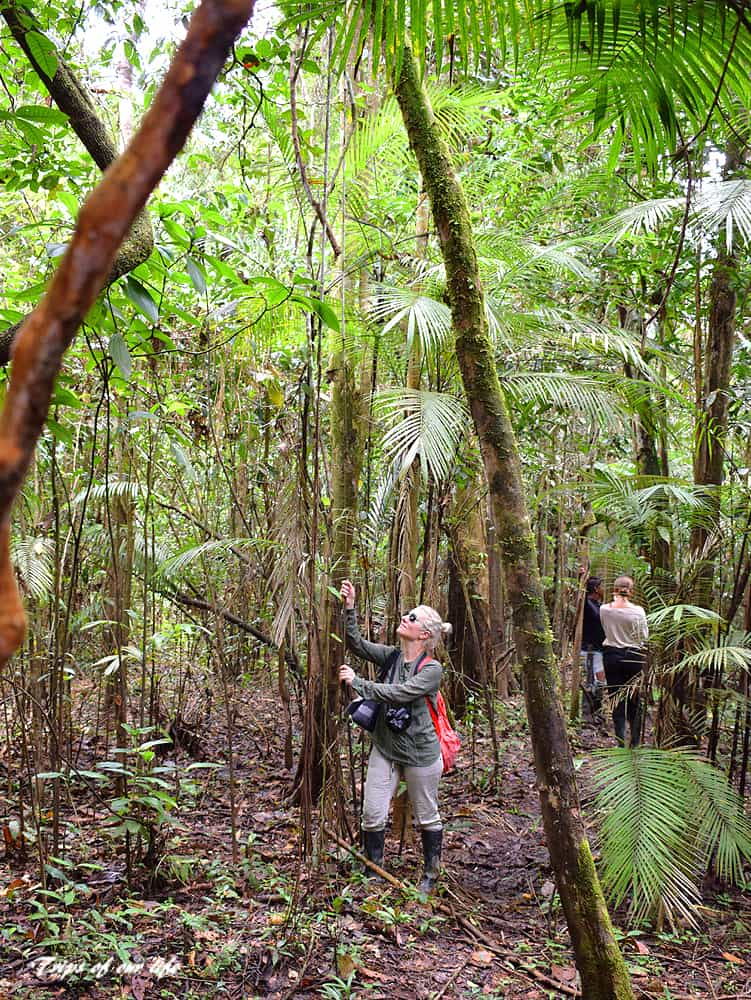
Exploring the rainforest around the lake
Ticuna kids playing in the lake
Swimming with grey and pink dolphins in the lake (next full width photo)
Countless sloths hanging on trees above our heads on our boat ride
Arriving at the Ticuna community of the lake
Our lodge in Tarapoto lake
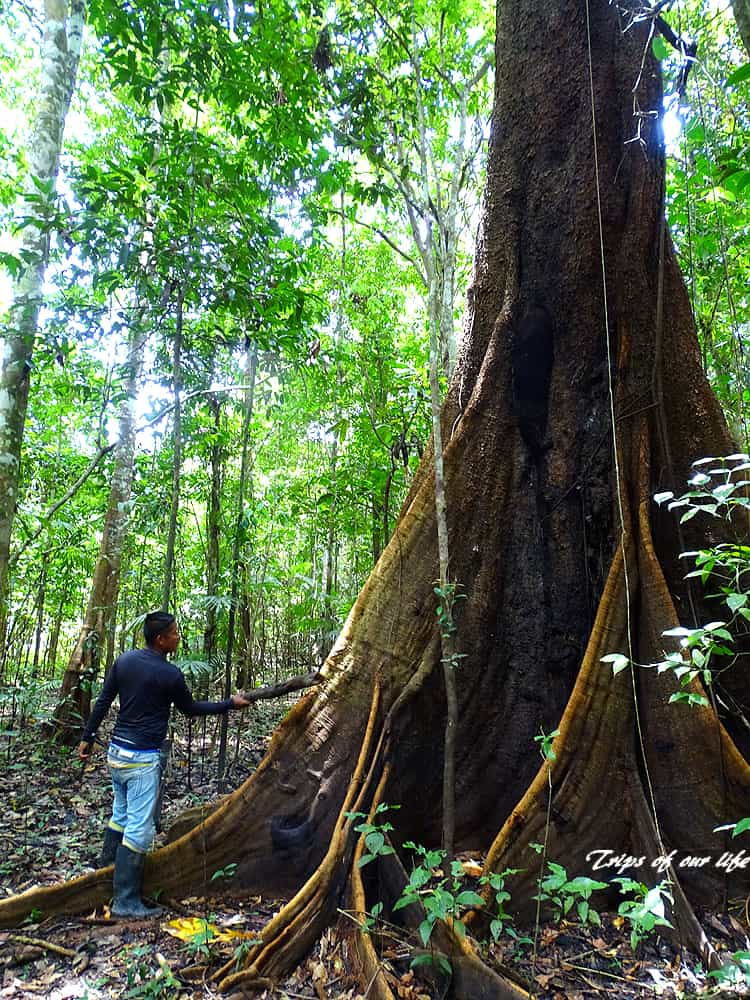
Beating the trunk of this huge tree with a piece of wood was the way that local tribes used to communicate with each other while into the jungle
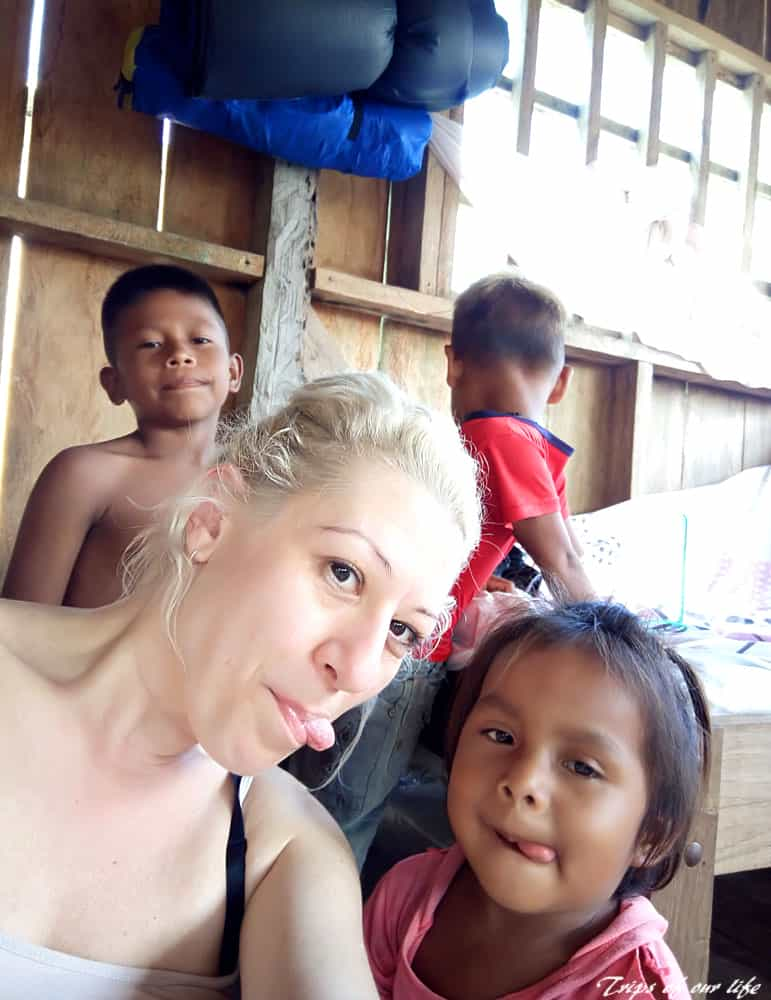
Although the kids were shy at first, they turned to be super friendly with us!!
Looking for caimans and anacondas on our night boat safari in the lake
Petting a caiman baby we found alone in the lake
Night boat trip in Tarapoto lake, looking for caiman crocodiles and anaconda snakes. Being guided by a local from Tikunas tribe, we went off late at night, totally in the dark, along the side rivers of the Amazon and staring at a huge milky way above our heads! It was the most spectacular night sky I have ever watched in my life so far! Sky was crystal clear and the galaxy seemed so close, as if you could extend your hand and touch it with your fingertips!! From the distant jungle ahead us, a menacing storm seemed to approach us and our guide informed us that if the storm reached us, we would have to return immediately, as during storm anacondas go out for feeding. We wished to see anacondas, but obviously not as close and personal. However, we saw numerous caiman alligators that were everywhere around us. At some point, we managed to see a baby one that was on its own, when our guide caught it and brought it to us to take a look for a while and soon after we let it free back in the lake. The ride was magnificent, our boat was passing through mangrove vegetation, dense treelines, with snakes hanging from their branches, listening nothing else but the jungle sounds by night, frogs, birds and insects. In a specific spot, our only light was that from countless fireflies! All, unique moments staying forever in our minds!
After 2.5 hours, we returned to our wooden hut for sleep, together with huge black butterflies, tarantulas and other night insects. The next morning, we were woken up very early by roosters and two dogs fighting and barking, but the scenery of the calm lake, with the palm trees under the morning light and the smiley Tikunas, compensated us and offered us the best awakening in the jungle over these days!
So it’s about time to say goodbye to our friendly hosts of Tarapoto lake, and go back to Puerto Nariño for breakfast and, afterwards, to start our adventure again, visiting another local community.
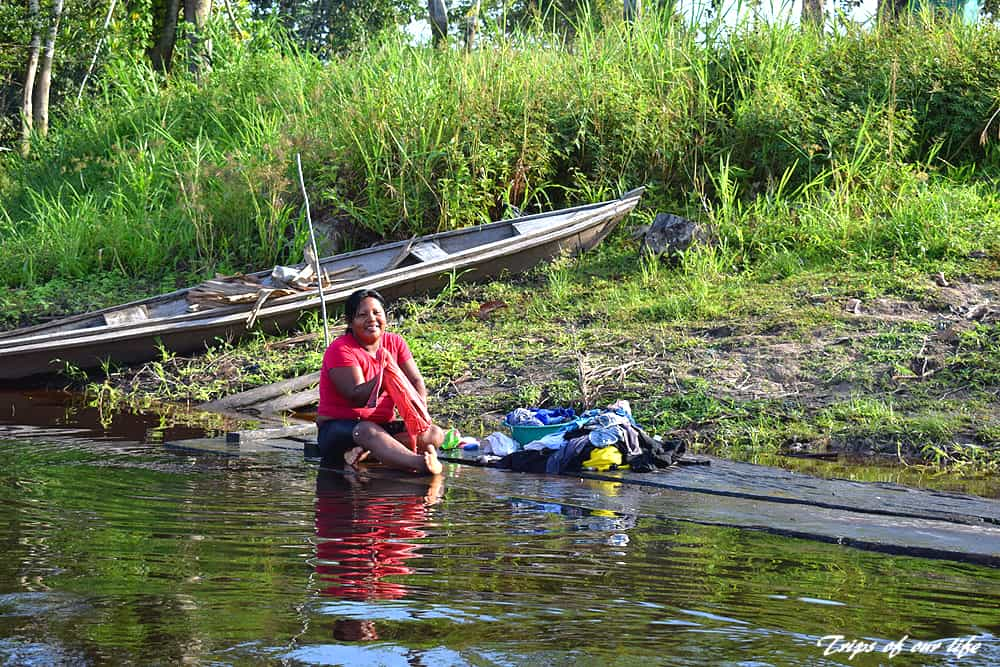
A Ticuna woman doing the laundry in the lake
Just a few miles away, to the opposite side of the Amazon, Isla San Antonio de cacao is located. This is a small island, an old refueling airport used by Escobar in 1980s, where people from the tribes of Tikunas and Campas now reside. We visited it just for half a day, for a small exploration in the Peruvian jungle and we got a small taste of the local community.
The jungle we wandered around was totally different to the one in the Colombian side. The trees were taller, the vegetation was more dense, the forest more humid but with a lower plant diversity and fruit variety. However here we met the biggest Amazonian tree, the Oje. The people living in the community were very polite as well and welcomed us by offering local fruits and fresh juice. Afterwards, we got familiar with their everyday routines, like the cooking of fariña, the basic ingredient of the Amazonian cuisine, as well as other regular tasks. Unfortunately, they could not serve us lunch, as a woman gave birth the previous day and they could not prepare for us on time. So, we returned to Puerto Nariño and, after lunch, we just relaxed alone walking around the village.
However, after dinner, we had a night walk into the jungle, a unique experience, since at that time one may meet many animals that are only active during night, like snakes and tarantulas. Hence, we had to prepare for all occasions: strong mosquito repellent, long-sleeved shirts, long trousers, rain boots and following the guidelines of our local guide, even on how to walk in the mud so as to avoid stepping (and being bitten) by poisonous snakes. We encountered several different species of insects, frogs, huge butterflies and impressive tarantulas, which were hiding within their nests in the soil. After our walk, we got back to the village, slept and got ready for our last day in Amazonia.
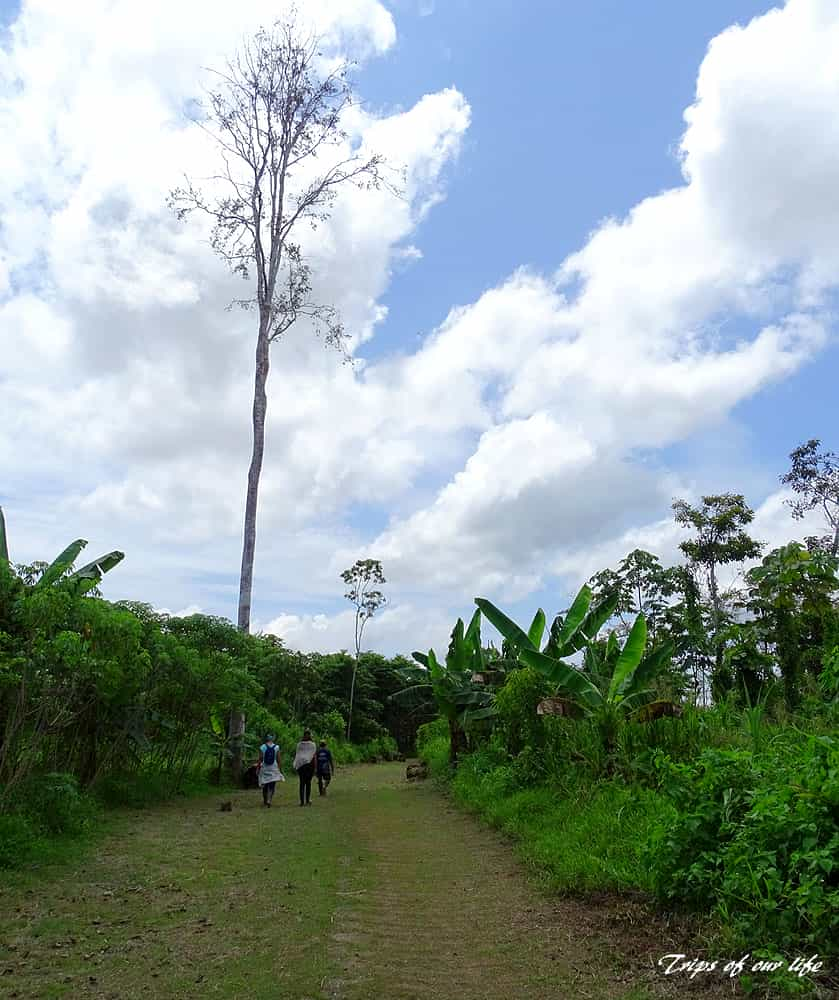
On our way to the local community on the island of San Antonio de Cacao, Perú
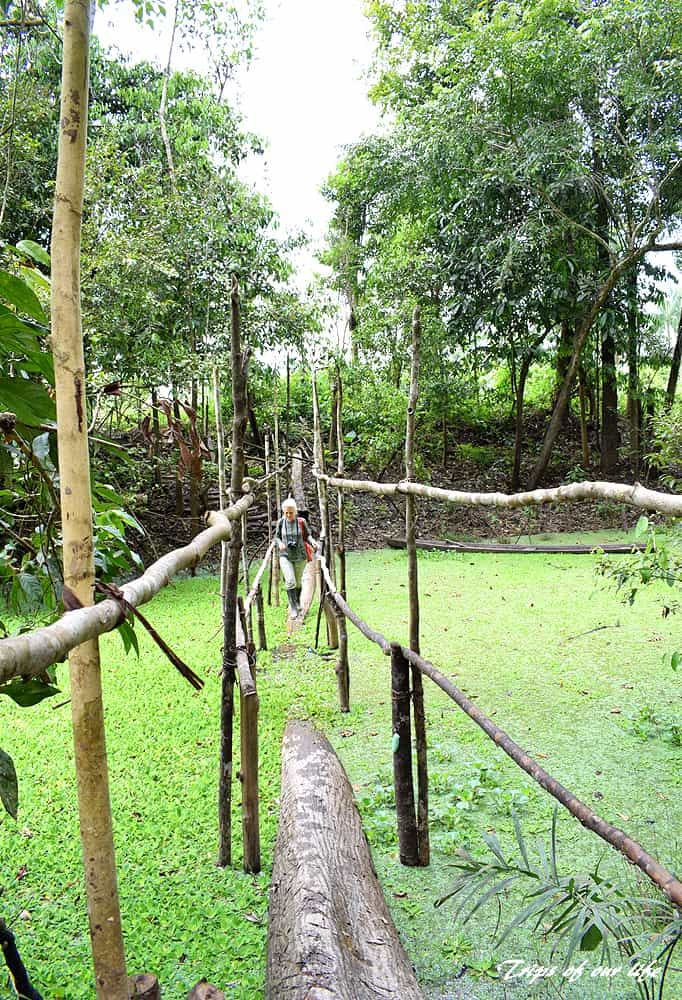
Exploring the Peruvian jungle of the island
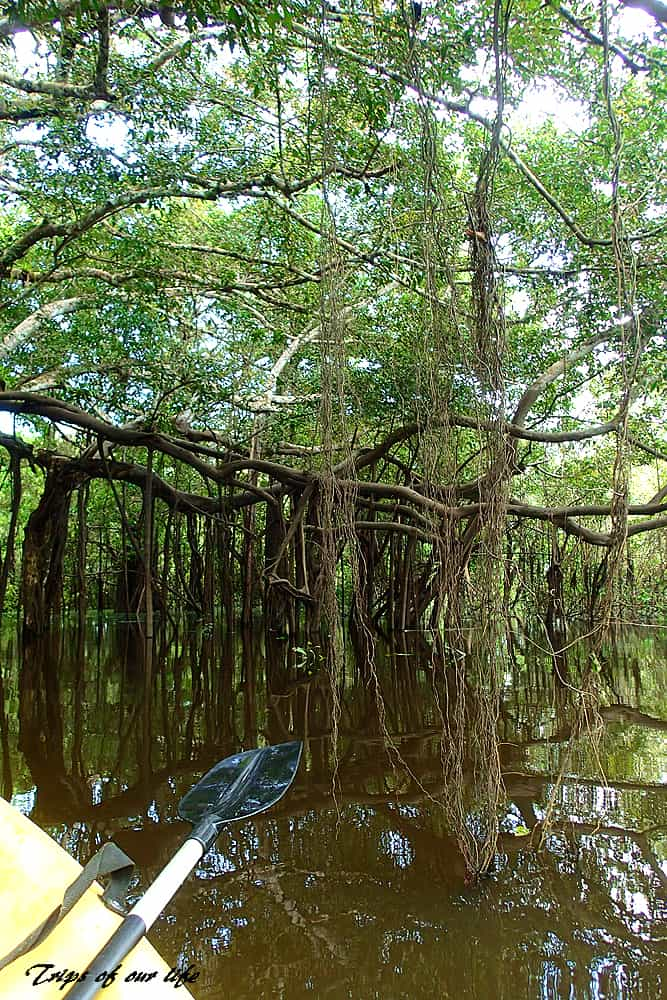
Back to Puerto Nariño to explore the flooded jungle on a canoe
Ice cream made of fresh tropical fruits
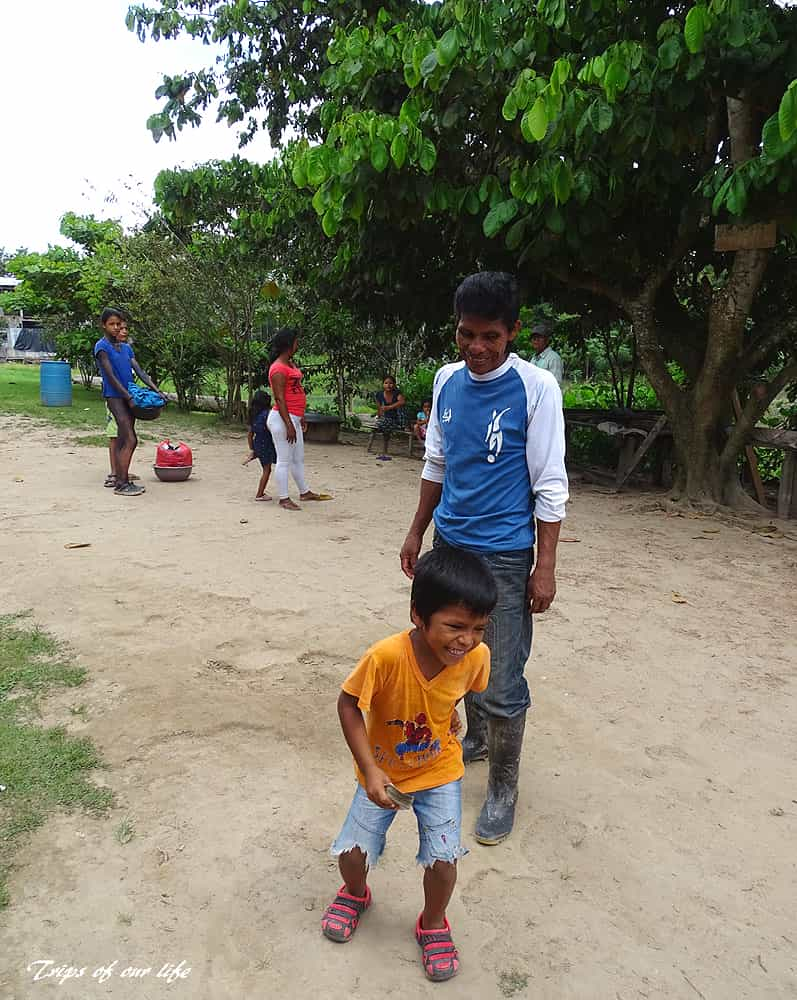
Meeting the locals of the island
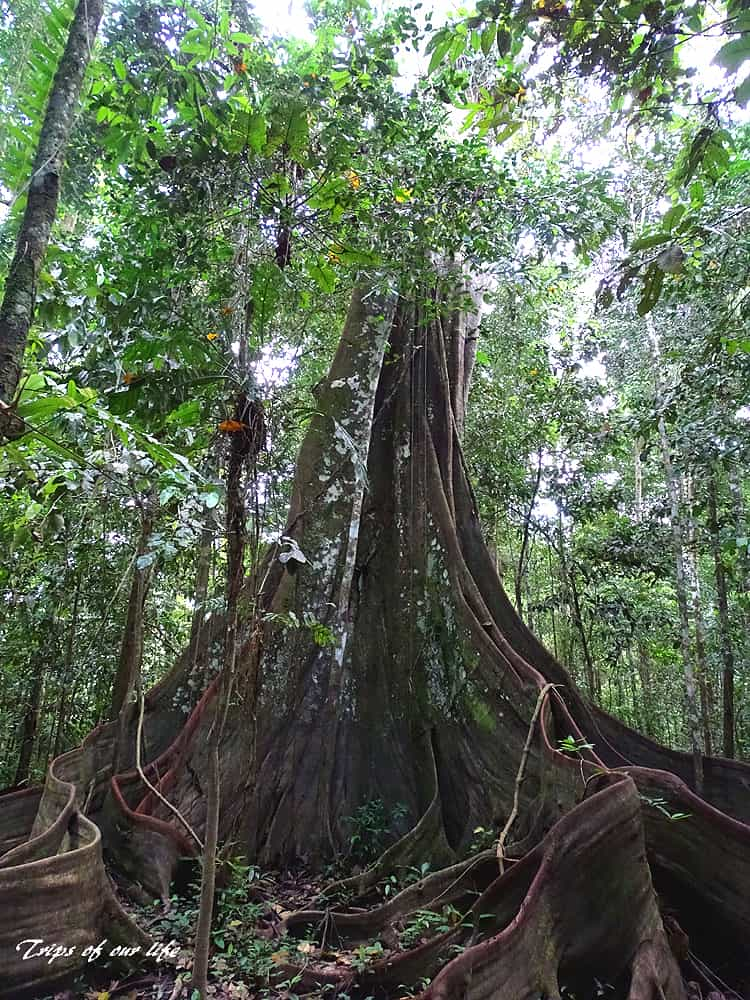
That’s oje, the biggest tree of Amazonia
Exploring the flooded jungle of Puerto Nariño
Spotting tarantulas during our night walk in the jungle of Puerto Nariño
Views to the village, the Amazon river and the jungle from Mirador, the highest observation point of Puerto Nariño (top and left)
Our 5th day was also the most relaxed, as we didn’t have to wake up as early as in the previous ones and our main activity was bird and animal watching by boat and kayaking in the flooded forests of the Amazon river. Afterwards, we returned to the village and ascended on the wooden observatory to enjoy the panoramic views around the whole area, to the village, to the neighboring communities and up to the dense jungle, even to Peru in the opposite shore of the Amazon. Then, we had one last walk to enjoy an ice-cream made of fresh tropical fruits and to say goodbye to the friendly inhabitants of the village that accompanied us during these days in this wonderful trip in the Colombian Amazonia.
As soon as we got our luggage from our guesthouse, we went towards the port to get on the last boat to Leticia, from where we would take our flight back to Bogota, with mixed feelings: happiness for all these things we saw and experienced during these 5 days, but at the same time great sorrow, because these 5 days were not actually enough.

